Author: Simon Black
This is a favourite for dog walkers and nature lovers alike. Depending on your pace this walk could take 30 to 45 minutes but a word of advice- the slower and quieter you are the more chances to you have to see the inhabitants, although this cannot be guaranteed! Keep your dog on a lead until you pass the Tump (see below) but always make sure they are in sight and not trampling on any nesting areas or scaring the gentle birds and animals who make their home here. I would also recommend this walk when there is a full moon. If there are no clouds, then there is nothing to restrict the moon (apart from the trees, but the moon still provides light in the woods). Take a torch in case the moon becomes obscured, but only switch it on if you really need to. You will hear the loud bark of the fox and the moon gives everything ghostly, yet strangely comforting hue.
The numbers refer to the pictures in this piece for ease of navigation.
Letters refer to the approximate location of the seasonal pictures at the end of this piece.
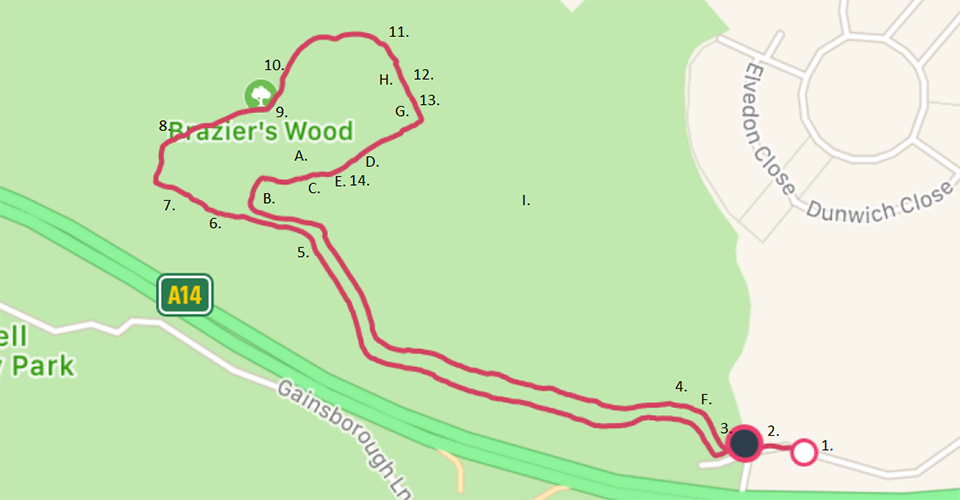
Heading East along the A14, you come to the Orwell Bridge. After the bridge you take the next turning left– follow the road downwards and around to the left. Go up this road and take the first turning left. Follow this road for three to four minutes. Before the road bends sharply to the left, (and over the A14 where you have just driven) there is a small car park. (Google map reference – Unnamed Road Ipswich 52.023862, 1.190978). Park here and cross the road at the bend.
Walk on the wide tarmac path in front of you (that runs parallel to the A14) very briefly until you find a grass path forking off to the right.
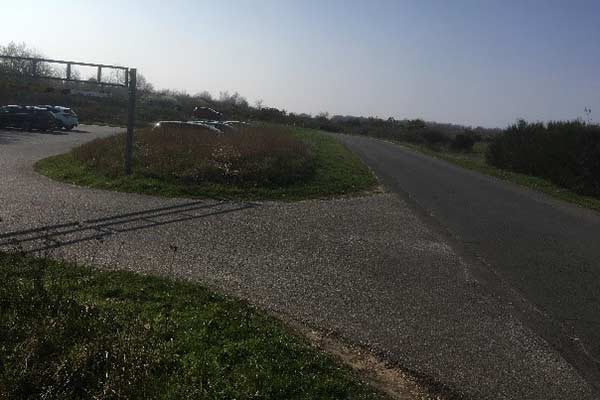
1.The car park. Cross the road where the bend to the bridge is.
Walk on the wide tarmac path in front of you (that runs parallel to the A14) very briefly until you find a grass path forking off to the right.
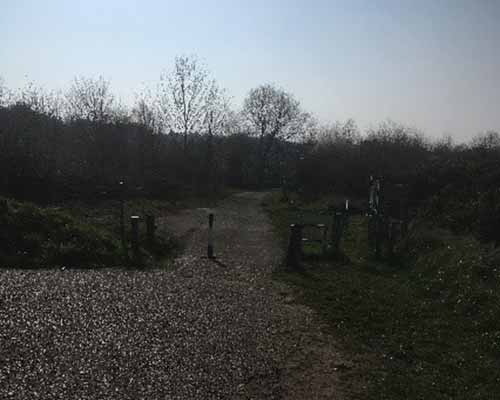
2.The wide tarmac path
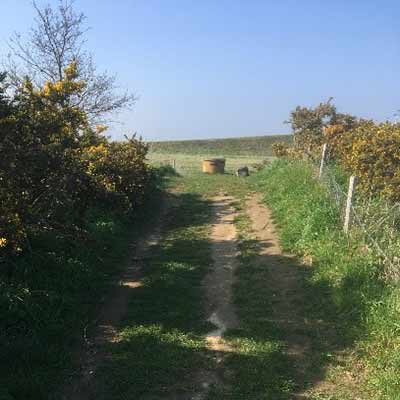
3.The path forking off to the right. You can see the carved bench and the shaft.
This path leads you to the carved bench and a large ventilation shaft. Turn left and walk up this path past the ‘Tump’ (the local name for the hill on your right). If you have a dog, keep them on a lead until you pass the Tump, to save them from running in the fields to the right. This is where the Skylarks nest.
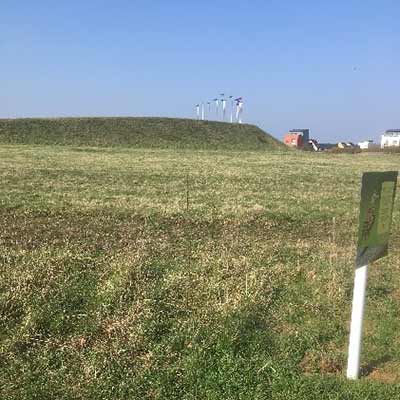
4.The Tump with the nesting field for the Larks.
Carry on walking up the path. It will become edged with bushes on both sides, and further on, the path will divide left and right. Take the left turn and you will find yourself in Brazier’s Wood.

5.The turning to Brazier’s Wood.
In Spring and Summer your can hear the birds singing – the Skylarks, the Hedge Sparrows, and the blackbirds to name but a few. You might also hear the woodpecker drilling against the tree.
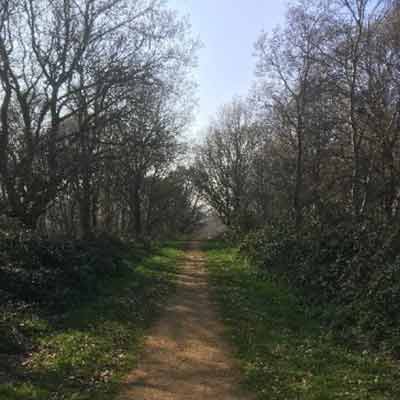
6.Brazier’s Wood.
At other times squirrels run around – scurrying up and down the tall trees either side of the path. Walk along the path (passing the first turn on your right) and you will come to an opening. Follow the stony path down the slope. The path veers off to the right, and the slope gradient lessens. Ferns and greenness surround the path on either sides, and then you will find yourself back under the cover of the trees.
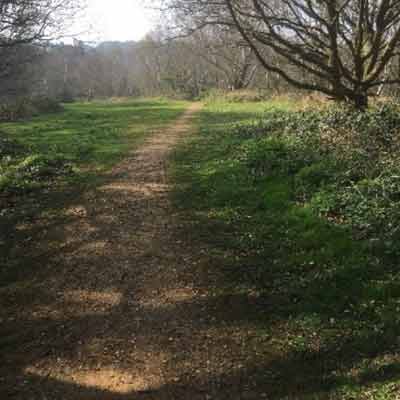
7.The stony path.

8.The path gradient lessens.
The path becomes a netted boardwalk. Follow the board walk and it comes to a stream with a bridge over it. The water is remarkably clear and it’s hard to see the source from where it comes from. It seems to come from a ravine that is camouflaged by undergrowth and trees.
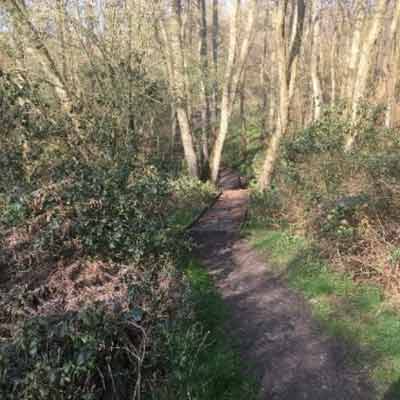 9.The path becomes a netted boardwalk.
9.The path becomes a netted boardwalk.
 10.The Bridge.
10.The Bridge.
Walk over the bridge, and the path slopes upward and around to the right. The slope gets steeper and there is a platform on the left.
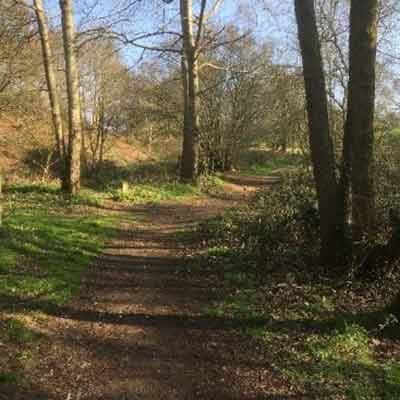 11.The path up to Brazier’s pond.
11.The path up to Brazier’s pond.
From the platform you can see Brazier’s Pond. The pond is a bit murky (if your dog is a spontaneous swimming then keep him or her on a lead), but it surprisingly is host to a lot of wildlife. In the Spring lots of frogspawn is in the pond in very inconspicuous places. The pond also supplies water for the many birds that live around the pond.
 12.Brazier’s Pond from the platform.
12.Brazier’s Pond from the platform.
If you are very lucky you might see a Muntjac deer before he or she darts into the bushes. They are shy and wary of dogs and humans but can reveal themselves inadvertently at times, usually a flash of brown fur and a white tail. Rabbits populate this part of Ravenswood park, and if it is not a busy day then you can see them scurrying around before making themselves scarce. They are vital to the biodiversity of the wood and add an innocence to your walk if you ever get the chance to see them. Throughout the walk, when the weather is damp, fungus can be seen on the trees and in of form of large toadstools.
Step off the platform for Brazier’s pond, and walk up the slope. You will come to a green clearing which has hosted many bluebells in the Spring. The colour is quite breath taking and the abundance can amaze. At the top of the slope you come to a T junction.

13.The T junction where you need to turn right.
Turn to your right and walk along the grassy path. The path twists and turns through the tall wood.
 14.The tall wood.
14.The tall wood.
Walk through the wood and you will come to the path that you walked along previously (picture 6). Turn left and walk up to the path that intersects the one you are walking on. Turn right and walk passed the Tump and up to the carved bench; there branch off to the right where you will find yourself on the hard tarmac path. Walk up to the road and cross over to the car park.
This is a very special walk. It is made extra special by the Ravenswood Wildlife Group, who work hard to keep the wood and its surroundings lush and healthy. Please respect this wonderful part of Ipswich, by taking your rubbish home, keeping to the paths, and managing your dog well. You might want to contribute to the work of the wildlife group by taking a small bag and some old gloves and picking up any litter that you might see. Just this small act is a huge help to the delicate and vulnerable beauty of this lovely area.
Additional Seasonal Pictures
 A. Fungus on a tree trunk.
A. Fungus on a tree trunk.
 B. A gnarled tree in Brazier’s Wood in Autumn.
B. A gnarled tree in Brazier’s Wood in Autumn.
 C. More fungus on a tree trunk.
C. More fungus on a tree trunk.
 D. Brazier’s Wood in Winter (The Beast from the East February 2018)
D. Brazier’s Wood in Winter (The Beast from the East February 2018)
 E. Bluebells.
E. Bluebells.
 F. Wild flowers sown by the Ravenswood Wildlife Group, to support the wildlife.
F. Wild flowers sown by the Ravenswood Wildlife Group, to support the wildlife.

G. Large toadstool.
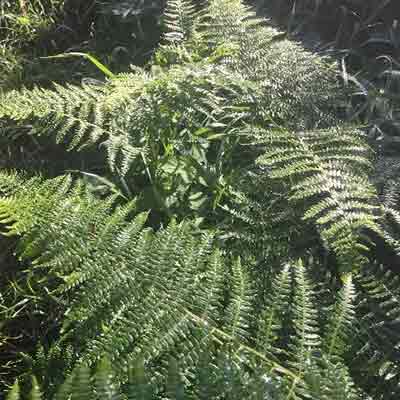 H. Ferns
H. Ferns

I.The sun setting over Brazier’s Wood.
This guide was written by:
Simon Black
Suffolk Writers Group